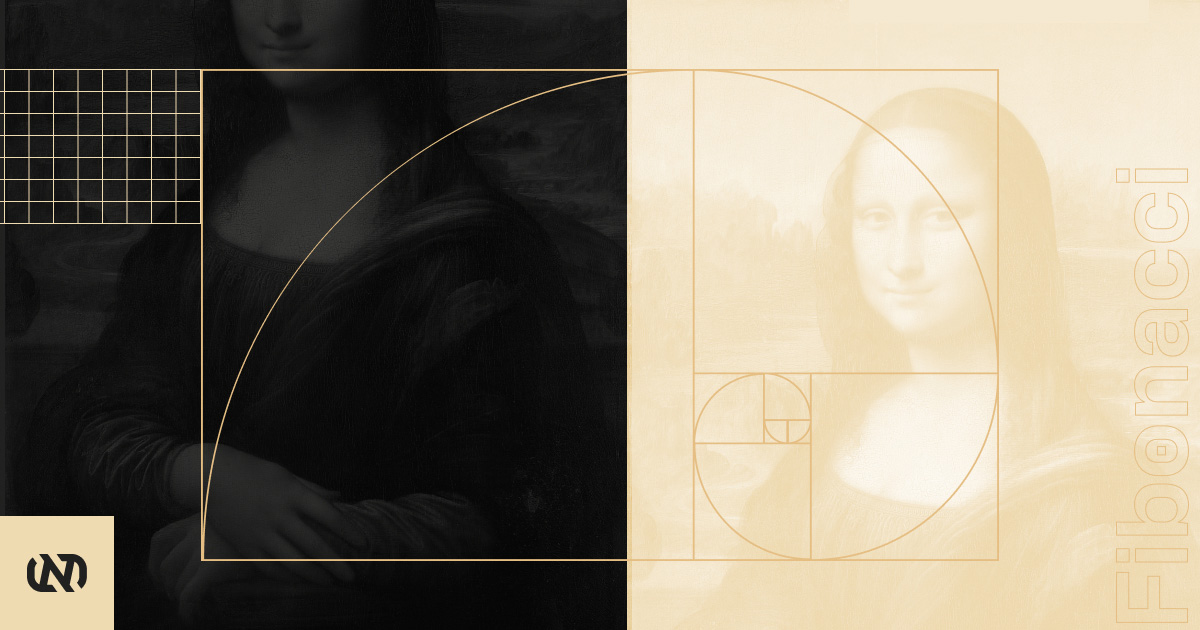When it comes to the Fibonacci numbers and the related golden ratio, it seems that they refer to one thing: balance.
The paranoia for certain number patterns has been a theme of dozens of movies. One of them is Darren Aronofsky’s “Pi”, where a hero named Max Cohen discovers a pattern in the Pi number. The movie portrays Pi as the number of numbers, the solution to everything.
Funnily enough, we do have something similar in real life. There is a mathematical equation that describes art, architecture, biology, and more. How is that possible?
What Are the Fibonacci Numbers?
Leonardo of Pisa, formerly known as Fibonacci, introduced a set of numbers in his book Liber Abaci in 1202, although this set has been known as early as 200 BC in India. Fibonacci discovered the numbers by studying the population growth of rabbits.
The sequence is simple from a mathematical standpoint. Every next number is the sum of two previous numbers.
Graphic:
Does it sound like an innocent set of numbers? You couldn’t be more wrong.
Fibonacci Numbers in Art and the Golden Ratio
Fibonacci numbers are linked to the golden ratio, a certain proportion that has influenced the art of our civilization since Ancient Greece.
The reason for the interest in this particular ratio was fueled by its frequent occurrence in geometry. In 1509, it was known as Divina proportione—a divine proportion that creates a harmonious and pleasing feeling.
A lot of artists have incorporated Fibonacci numbers into their works. Among the notable examples, there are:
- Salvador Dali’s The Sacrament of the Last Supper
- Leonardo DaVinci’s Mona Lisa
- Aphrodite of Cidos, Poseidon, and many other Ancient Greek sculptures
- Michelangelo’s Holy Family
- Rembrandt’s self-portrait
Fibonacci Numbers in Architecture
Whenever we refer to Fibonacci numbers and golden ratio, it’s because there’s a correlation between these two. If you’ll divide one number in the sequence by the previous one, you will get 1.6 as a result. That’s what the golden ratio is: a ratio between the sum of two quantities to the larger one of them. The result is 1.6180339877… and similarly to Pi, there’s no pattern in the fraction sequence. What’s worth keeping in mind though is that Pi is transcendental—and the golden ratio is considered irrational.
As it turns out, it’s also widely observed in architecture. The examples include:
- The Great Mosque of Kairouan in Tunisia
- Notre Dame Cathedral
- Parthenon
- Eiffel Tower
- Taj Mahal
Fibonacci Numbers in Nature
This is where it gets weird. You can find Fibonacci numbers in nature! Even if humans somehow get fixated on a particular number, sequence, or ratio, it’s not because of our abstract thinking.
Don’t think so? Here are some examples:
- The arrangement of leaves on a stem
- Fruit sprouts of a pineapple
- Perfect 5th in music
- Artichoke’s flowering
- Pine cone’s bracts
- Nautilus shell’s spiral
- Population growth
- The ratio of female bees to male bees in a hive
Fibonacci Numbers in Finance and Crypto Trading
It seems that Fibonacci numbers can also be helpful when it comes to technical analysis of financial instruments. There are a couple of related techniques that use percentages flowing from the Fibonacci sequence: 38.2%, 50%, 61.8%:
- Fibonacci Retracement—uses horizontal lines to define levels of support or resistance, meaning the chart won’t go beyond this line at the analyzed period.
- Fibonacci Arcs—chart’s highs and lows are used to draw ellipses that point to the trading ranges, support and resistance levels
- Fibonacci Fans—it’s another technique to predict support and resistance levels, although this time, the lines are diagonal.
- Fibonacci Time Zones—this seems to be the most mysterious. It uses the Fibonacci sequence of 1, 1, 2, 3, 5 (and so on) to find timestamps at which a major price action can be expected.
Finding the Perfect Balance
When it comes to the Fibonacci numbers and the related golden ratio, it seems that they refer to one thing: balance.
It seems that both nature and human creativity aim to find that sweet spot—and if they do, mathematics is there to provide a proper description.

